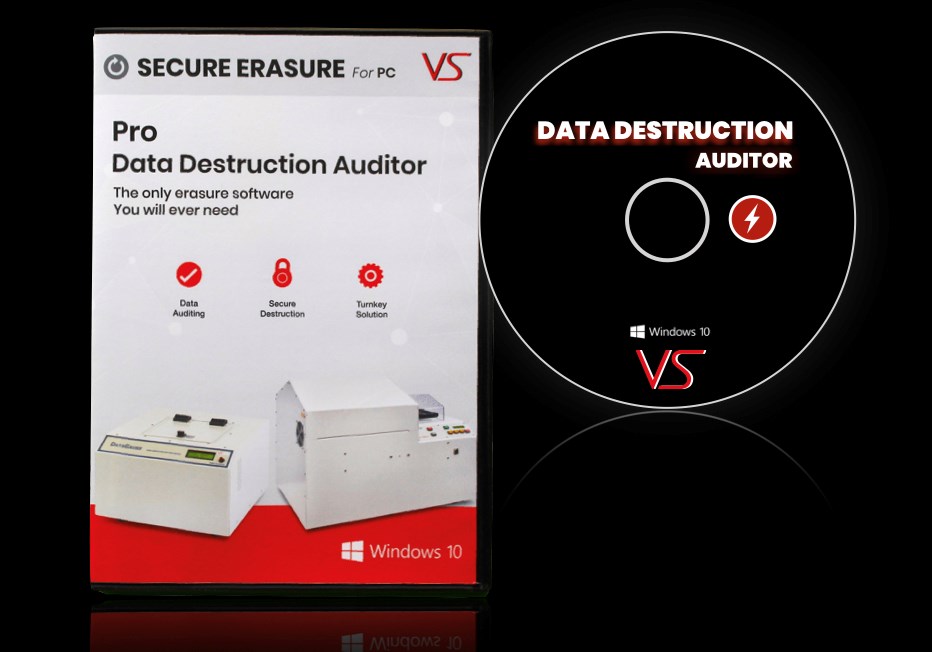Maximizing Cyber Security through Advanced Data Destruction Methods
Maximizing Cyber Security through Advanced Data Destruction Methods
Blog Article
The Importance of Effective Data Devastation Practices in Shielding Sensitive Details and Ensuring Computer Protection
In an age where information violations are progressively usual, the significance of effective data destruction methods can not be overemphasized. Executing durable information devastation methods not only alleviates these threats but additionally straightens with lawful conformity demands, ensuring that companies maintain their track record and foster client count on.
Understanding Information Devastation
Understanding information destruction is essential in today's digital landscape, where delicate details can easily be endangered. Effective data damage includes not just guaranteeing but deleting documents that data is irretrievable with thorough techniques. This procedure is necessary for companies that handle confidential customer info, intellectual building, or interior files, as any type of breach can result in severe financial and reputational consequences.
Information devastation incorporates different methods, consisting of shredding physical media, degaussing magnetic storage space devices, and utilizing software-based remedies that overwrite data multiple times. Each method serves a details function and has to line up with the level of sensitivity of the details being gotten rid of. As an example, physical devastation is often liked for hard disks having highly private data, while software techniques could suffice for less sensitive info.
Moreover, sticking to industry standards and guidelines, such as the General Information Security Policy (GDPR) or the Health And Wellness Insurance Coverage Mobility and Responsibility Act (HIPAA), is critical for conformity and to reduce legal threats. Organizations has to develop a robust information devastation plan, train workers on finest practices, and on a regular basis investigate their procedures to ensure that all delicate info is disposed of securely and efficiently.
Risks of Inadequate Practices
Poor data devastation methods expose organizations to substantial threats that can have far-ranging effects. When sensitive details is not correctly thrown away, it remains at risk to unauthorized accessibility, which can cause data violations and identity theft. Such cases not only endanger the safety of people however additionally stain the organization's reputation, causing a loss of consumer trust fund and potential financial consequences.
Additionally, governing conformity is increasingly stringent in many industries. Failure to abide by data devastation laws can lead to large penalties and lawsuits against companies. These charges can strain funds and divert focus from core company procedures.
In enhancement, the abuse of recurring data can lead to copyright burglary or corporate espionage, endangering affordable benefits (data destruction). The effect of poor data damage expands past immediate financial losses; it can likewise cause lasting damage to brand name honesty and market position

Organizations must acknowledge that information protection is not exclusively about protecting against violations; it also includes the accountable administration of information throughout its lifecycle. Disregarding reliable information damage methods can have disastrous ramifications, emphasizing the need for durable actions to minimize these threats.
Finest Practices for Data Devastation
Applying reliable data damage methods is necessary for safeguarding sensitive details and preserving conformity with regulative requirements. Organizations should adopt a multi-faceted strategy to ensure that data is irretrievable, thereby preventing unapproved access and prospective breaches.
First, data must be classified based upon sensitivity, enabling companies to apply appropriate damage methods customized to the level of danger. For electronic information, using software-based data-wiping devices that abide by sector standards can successfully overwrite existing information. Physical damage approaches, such as shredding or degaussing, are vital for tools that store delicate details, guaranteeing full eradication.
Establishing a clear data retention plan is essential, describing just how long various sorts of info need to be preserved prior to devastation. Regular audits of data storage systems are likewise needed to recognize outdated or unnecessary information needing removal.
Moreover, training staff members on the significance of information destruction and the certain protocols to adhere to fosters a culture of safety within the company. Maintaining documentation of data destruction processes provides liability and sustains compliance with internal plans and external guidelines. By sticking to these finest practices, companies can significantly minimize the threats connected with data exposure.
Legal and Compliance Factors To Consider
.webp)
Failure to abide with these policies can cause serious penalties, consisting of significant penalties and reputational damages. Organizations must implement a robust data destruction plan that straightens with these lawful structures and offers clear standards on the appropriate techniques of information disposal, whether physical shredding or electronic cleaning.
Additionally, preserving documents of information destruction tasks is important for demonstrating compliance throughout audits or examinations. By focusing on lawful and compliance considerations, companies can boost their information you can try this out safety stance and foster trust with stakeholders and customers, inevitably adding to an extra safe and secure information management environment.
Advantages of Effective Information Destruction
Effective data damage methods prolong past simple conformity; they supply significant advantages to companies that prioritize them. By ensuring that sensitive information is irretrievably destroyed, organizations reduce the danger of information breaches and the prospective monetary consequences linked with them. This positive method not only safeguards against unauthorized access but also read this post here improves the overall dependability of the organization in the eyes of stakeholders and customers.
Carrying out robust information devastation techniques, such as physical devastation of storage tools or advanced information wiping methods, adds to the fortifying of an organization's cybersecurity posture. data destruction. It minimizes the probability of intellectual residential or commercial property burglary and safeguards proprietary details, thereby keeping an one-upmanship in the marketplace

Conclusion
In verdict, efficient data damage practices are necessary for guarding sensitive info and enhancing overall computer system security. By implementing comprehensive approaches such as software program, shredding, and degaussing overwriting, companies browse this site can reduce the threats linked with unauthorized access and data violations. Adherence to governing standards, including GDPR and HIPAA, more enhances compliance and shields versus lawful effects. Inevitably, a dedication to durable information damage approaches cultivates a culture of obligation, thereby enhancing a company's cybersecurity pose and maintaining client trust.

Report this page